- Discover Madrid
- To see and do
- For you
- Accommodation
- Plan your Trip
- Professionals

Things to do in madrid
iconic places in madrid
Itineraries in Madrid
sights in madrid
top attractions in madrid
museums in Madrid
Tourism in Madrid

In the heart of the Barrio de las Letras, breathing art on all four sides, is the first Flamenco Brunch in Madrid. Every Sunday, from 12:00 p.m. to 2:00 p.m., enjoy the best flamenco live while you enjoy a Spanish-style brunch.
The format of this flamenco brunch offers two shows in each session, a first contact with the most traditional flamenco, followed by a last show that is more innovative and explores new trends.
A welcome cocktail will be served, followed by a representative menu of our gastronomy: salmorejo, Russian salad, croquettes, meatballs or migas are some of the proposals that will pass through the table.
National culture and gastronomy united in the same space!
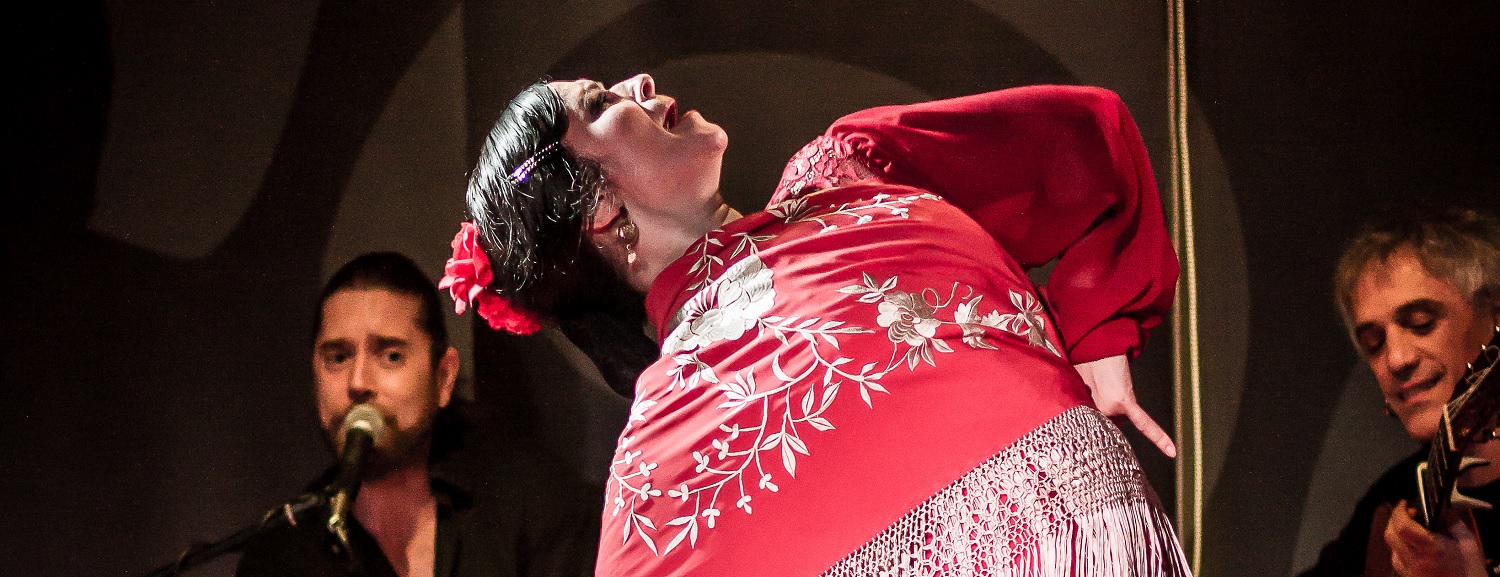

In the Embajadores neighbourhood you can find this modern tablao which hosts an extensive programme dedicated to flamenco. In its rooms there are recitals of singing and clapping, flamenco paintings and other formats, palos and styles related to flamenco singing.
The venue has a 16 square metre stage, with a height designed to appreciate all the details, including the foot tapping. The room has 80 seats, with tables and chairs of different configurations, to always offer a clear view from any point in the room.
The venue is committed to an emotional, original programme that moves its audience. It is designed both for flamenco fans and for all those who want to come and enjoy the show. Don't hesitate, check out the programme and come to Café Ziryab in Madrid.
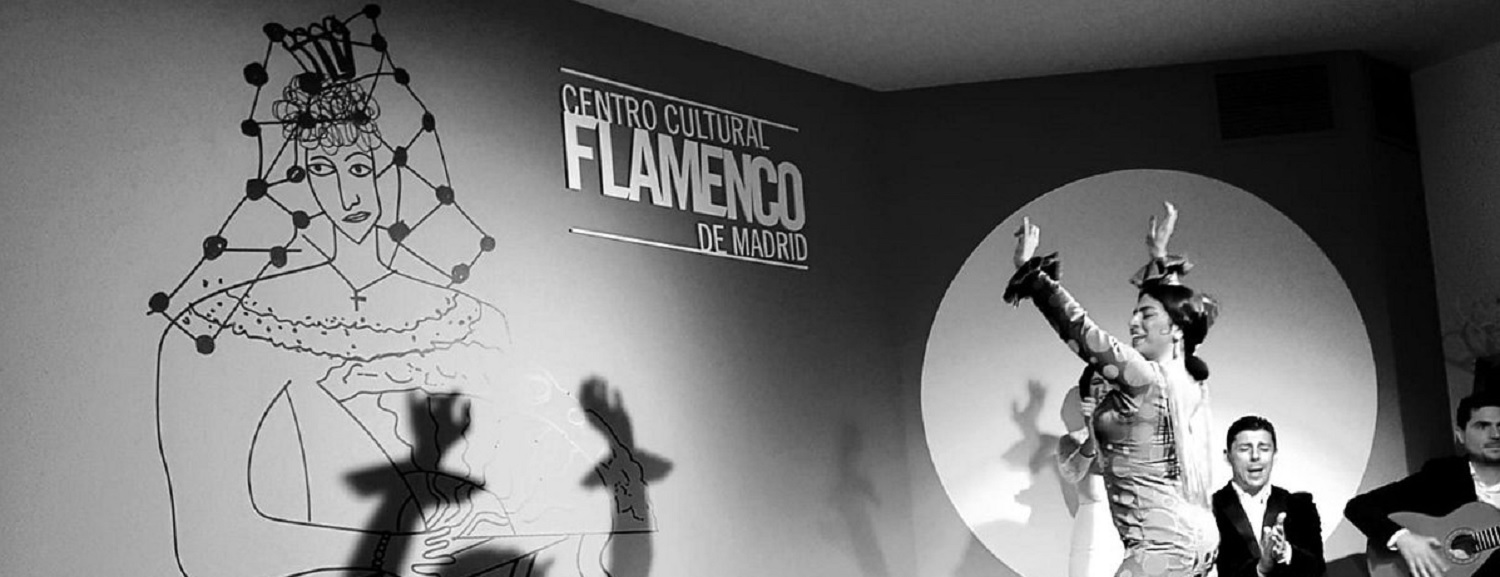

In the centric neighbourhood of Chueca you will find this tablao which opened its doors in February 2019. Its young trajectory does not prevent it from connecting with the most authentic tradition of flamenco. Dance, singing, foot tapping and guitar, along with all the folklore of flamenco shows.
The tablao is located in an area with a certain flamenco tradition, dating back to the 18th century, with the mention of the nearby street Calle Barquillo in several seguidillas of the period. The building where the centre is located is a restored manor house, originally from the 19th century.
Come to the centre one evening and enjoy intimate, passionate and authentic flamenco. There are also record and book presentations, conferences, photography and painting exhibitions and even an exhibition of flamenco costumes and fashion.

Considered by many as the Mecca of flamenco in the capital, this is one of the oldest and most important tablaos. Opened in 1956, it has accumulated more than 60 years of tradition and spectacle, being known throughout the world.
Its fame comes from afar. El Corral is included in the book "1,000 places to see before you die", perhaps the most famous travel book in the world, number one in the New York Times. Countless celebrities have enjoyed a flamenco evening in its rooms, such as Charlton Heston, John F. Kennedy, Nicole Kidman or Pablo Picasso. This is how this place has accumulated countless awards during its existence, such as the recognition as "World Best Flamenco Tablao” of the Festival Internacional de Cante de las Minas de la Unión.
Every night, Monday to Sunday, the Corral offers the most demanding flamenco shows, carefully chosen, being a reference in the current scene of this art. In addition, the venue has two exclusive gastronomic spaces, the Corral de la Morería and Tablao restaurants. Under these names, the Basque chef David García presents his proposals for visitors, having achieved a Michelin Star in 2019, a recognition that he revalidated in 2020 and that places the Corral also as a gastronomic reference in the capital.
Flamenco, recognised as Intangible Cultural Heritage by UNESCO, is an artistic expression born of a mixture of different cultures. Madrid's relationship with flamenco is built through its tablaos, which offer the best flamenco programme in our country in terms of quality, authenticity and variety. The tablaos represent a cultural expression of the first magnitude, which maintains its essence intact, unique in the world.
The flamenco offer of Madrid's tablaos is an essential and unique resource, the best national and international launching pad for the most important artists of this cultural genre. Our region hosts flamenco shows continuously, either in its theatres or tablaos, or in halls and venues.
The legacy of those magical 20th century years remains alive in Madrid, in different tablaos that have been operating in the capital for decades. The tablaos that make up the brand “Tablaos Flamencos in Greater Madrid” " host the main scene in our region. Surely the most popular of all of them is Corral de la Morería, whose origins date back to 1956. It has been recognized as the best flamenco tablao in the world, for its constant and varied programming that, in addition, is completed with a gastronomic offer that does not forget the origins of the place and its culture. Figures of great importance in the genre such as Paco de Lucía, who presented his unforgettable Entre dos aguas (1981) there, have performed on its stages.
TIt is also worth highlighting Madrid's oldest tablao: Villa Rosa, a tablao that began operating in Plaza de Santa Ana in 1911, although it initially did so as a tapas bar and Andalusian wine bar. It was at the end of that decade when it took the definitive turn that would lead it to become "The Cathedral of Flamenco," as it is known today. In the early 1960s, it interrupted its activity for a year, but by the 1970s it had already regained its rhythm and previous splendor. And up to the present day.
We could continue highlighting other venues. For example, Cardamomo, which the Madrid City Council declared a Cultural Heritage of the city. It opened in 1994 as a proposal that combines dance and singing. On the other hand, in the heart of Vallecas, far from the city center, there is El Cortijo, another tablao that has gained national and even international fame. So yes: it is more than possible to enjoy flamenco in Madrid.
HTowards the middle of the 19th century, around 1860, pop-up cafés cantantes began to proliferate, direct predecessors of today's tablaos. Chronicles of the time speak of scandalous places, so that certain social classes were opposed to them, finding them indecent. Be that as it may, all kinds of audiences frequented these corners, with a special presence of the lower and middle classes. Together, they took flamenco very far, to the point that by the end of the 19th century flamenco was the owner of Spain's social life.
As mentioned, Madrid was one of the great flamenco centers in the late 19th and early 20th centuries. Many of the great stars of the time decided to move to Madrid to grow in the "court city". Thus, the shows began to multiply. In the 1920s, the Pavón Theater, still located in Embajadores Street, created the so-called Copa Pavón. Its objective was to recognize the talent of the singers, increase their prestige and bring the genre even closer to the public.
In the first competition, names like Sevillians Niño Escacena, Pepe Marchena, or Manuel Vallejo could be read. With this competition, the stage of opera flamenca was born, which never had great acceptance because it left out very appreciated palos (different styles in flamenco), such as bulería. But there were also sweet years in which figures such as La Niña de los Peines or, later, Juanito Valderrama could be enjoyed.
More information: Tablaos Flamencos in Greater Madrid
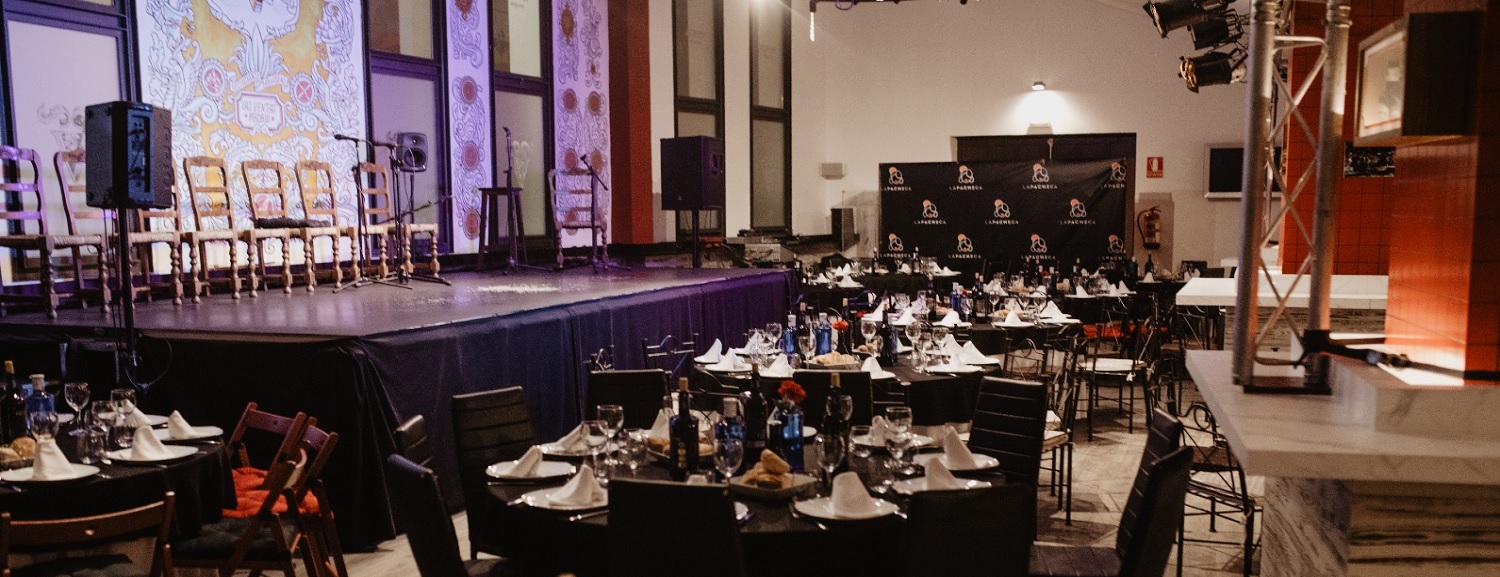

El Corral de la Pacheca is one of the most historic tablaos in the city. It opened its doors in 1971 and, since then, it has illuminated Madrid's nightlife with the most exquisite flamenco.
Daily shows make up an agenda where singers, dancers and guitarists join forces with violinists, flautists and percussionists to tackle a multitude of flamenco styles: bulerías, fandangos and alegrías. Whether you are a flamenco fan or just want to discover this art form, Corral de la Pacheca is without a doubt a reference point on the flamenco scene.
In addition, the venue houses a restaurant to liven up the flamenco shows with the most exquisite culinary offerings. The tablao is located in a privileged area, next to the monumental bullring of Las Ventas, a place where you can breathe tradition in every corner. Check the programme and come and enjoy the best flamenco.
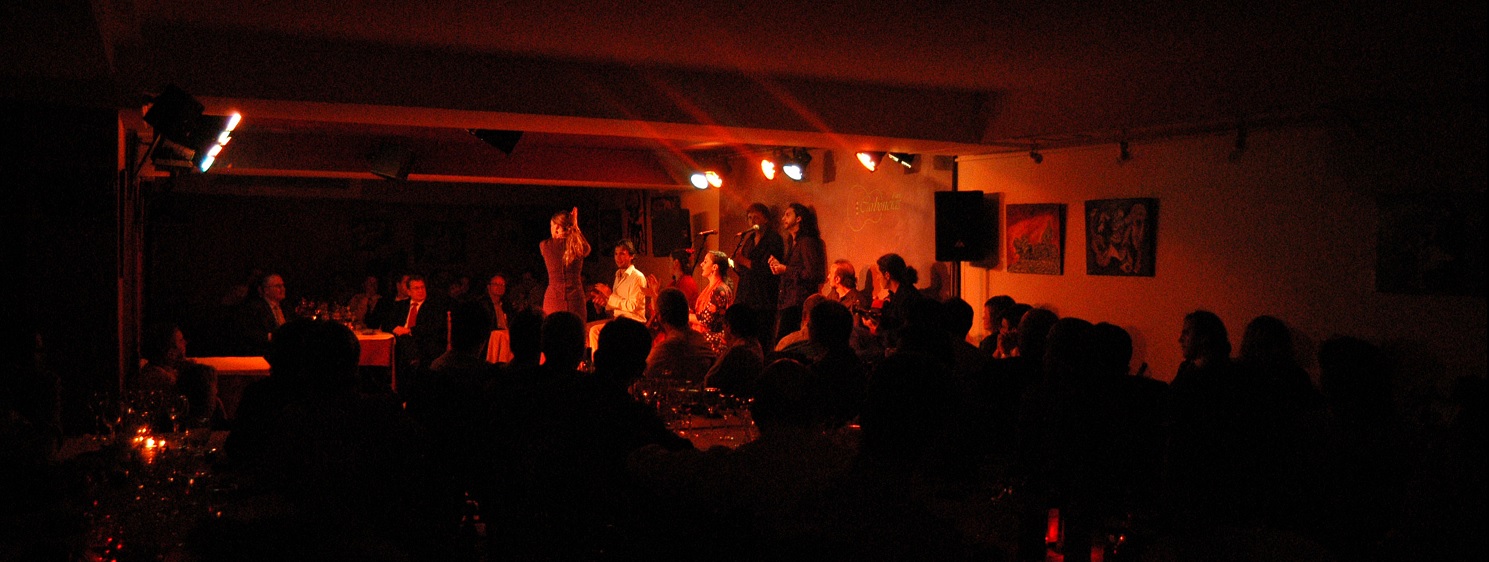

The Tablao Las Carboneras is located in the central and most popular Barrio de los Austrias. With the spirit of a café, with the soul of the old singing cafés, outstanding figures of national flamenco have performed on its stage.
Pastora Galván, Marco Flores or Rocío Molina are some of them, who have participated with their particular styles in shaping the eclectic agenda of Las Carboneras. The venue has created its own style and is a reference point in the local renovation of flamenco.
The venue integrates a restaurant to accompany the shows on stage. In addition, various exhibitions can be seen on the walls of the venue, creating an atmosphere of cultural fusion and gastronomy that will delight everyone.
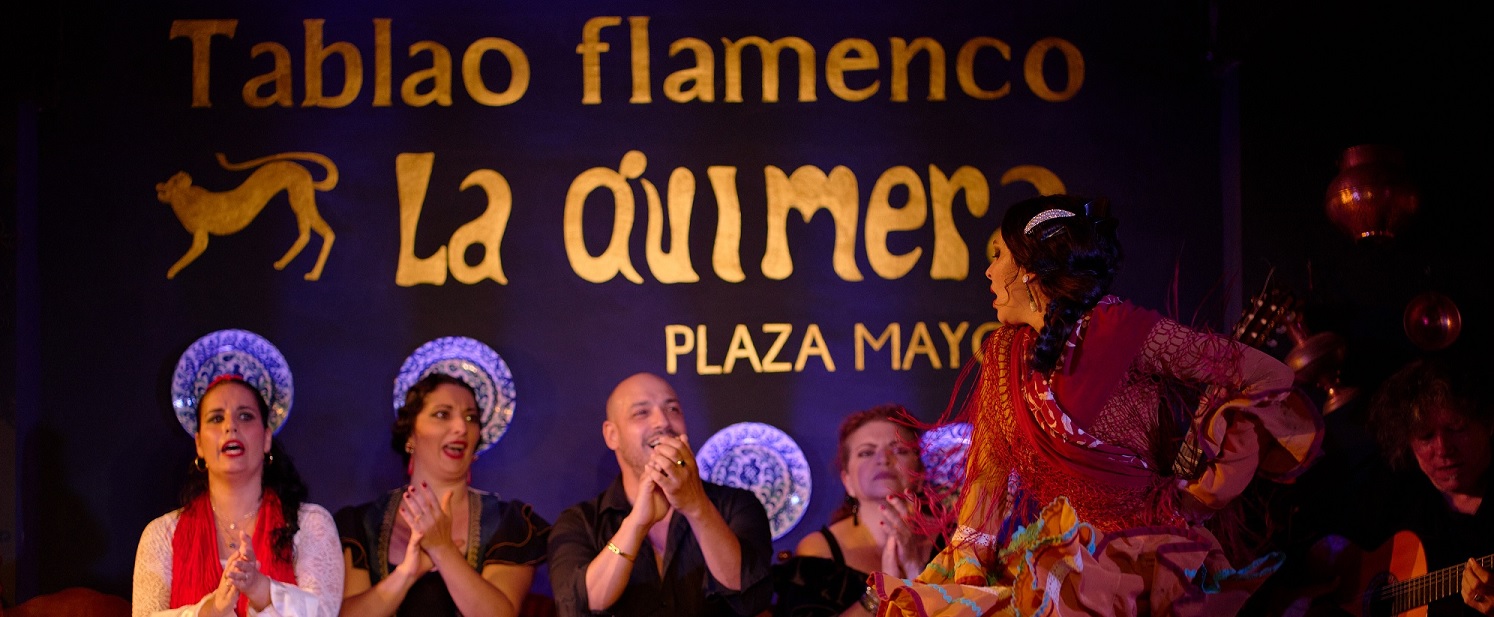

Next to the capital's emblematic Plaza Mayor is the flamenco tablao La Quimera, which boasts of being a reference point for flamenco venues in Madrid. On its stage you can enjoy the best-preserved flamenco tradition.
If you like Sevillanas, this is the tablao for you. With an extensive programme offering daily shows, you can enjoy its rich cultural offer until late at night. After midnight, the tables are cleared and the venue becomes a collective celebration of flamenco.
Without microphones and with all the passion on the grill, the artists who parade through La Quimera participate in this intimate and vibrant flamenco. Whether you are looking for a mid-afternoon show or an evening performance, you will always find the best flamenco soul at La Quimera.
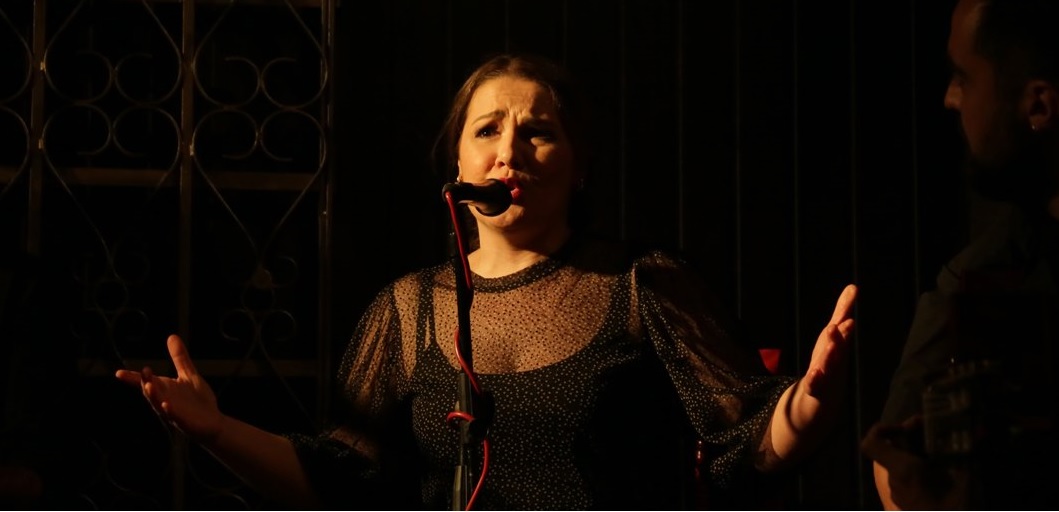

This flamenco tavern is located in Madrid's Vallecas neighbourhood. With a folkloric and traditional soul, the place hosts a great flamenco programme that combines with an authentic recreation to transport you with the music..
Just 15 minutes from the city centre, the venue boasts of welcoming tourists and locals alike. This allows it to breathe the air of the big shows with foreign audiences and, at the same time, to remain a meeting place for neighbours and regular customers, in a more intimate and recurrent format.
Thus, the tavern has a restaurant where the Madrid clientele are regulars. Flamenco shows are offered, accompanied by a drink and, in addition, the gastronomic offer to liven up the evening. For those interested, there are also introductory workshops in this discipline, both in English and Spanish. Visit El Cortijo!

We want to recover intimacy, which was the essence of authentic flamenco. The audience literally glued to the stage, surrounded by three rows of chairs. No tables, no food, no distractions. Pure flamenco.
Our show is performed in a brick cave more than 100 years old without any amplification. All directed by our artistic director Juan "El Mistela", winner of the national flamenco critics award. We have shows every day at 18:00, 19:30 and 21:00 of one hour each.
Flamenco jondo (jondo comes from "hondo") brings together, in a melting pot never seen before, five musical cultures: the local Andalusian folklore, the music brought by the gypsies (who emigrated from India to southern Spain in the year 1400), Arab music (the Arabs were from the year 700), and also musical traits of the Jews and Castilians. It is a music that touches the universal soul. A music we are committed to.
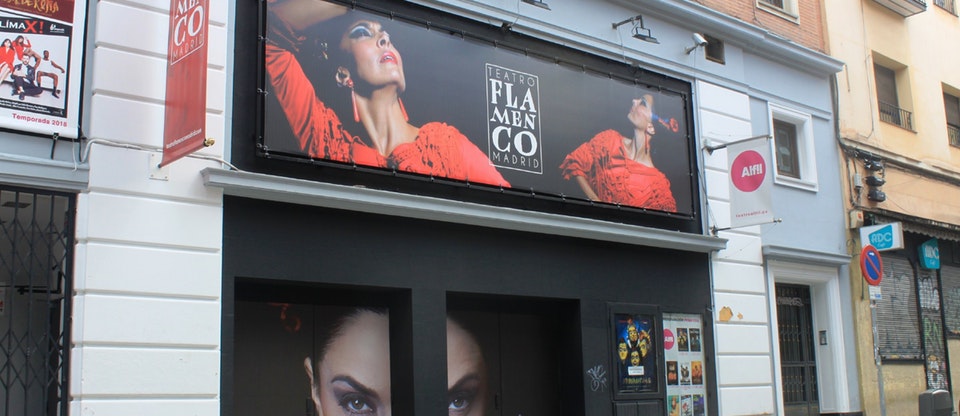

In the crowded and central Calle del Pez we find this tablao, an authentic Andalusian beacon that illuminates the capital with the best flamenco offer and one that is a meeting point for fans, tourists and locals.
Housed in the Teatro Alfil, the venue has the characteristics for all kinds of events beyond its dedicated programme. Hold private meetings in its halls on request or enjoy its programme, its flamenco cycles and a repertoire that is always innovative but embedded in the most authentic tradition.
The theatre also offers introductory flamenco classes, which are taught by many of the artists who later take the stage. An exclusive opportunity to learn the skills of the immemorial art of flamenco and then see the most acclaimed masters on stage. Flamenco is waiting for you at the tablao!